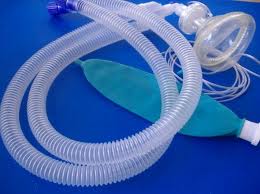Scientists have worked out the best way to dry your hands and it appears that paper towels not only dry hands quicker than electric driers, they are also more hygienic.
While the importance of washing hands is obvious, the benefits may be undone if they are not dried properly, experts said.
This is because wet hands are better at passing on germs than dry ones, biomedical scientist Cunrui Huang said.
His review of 12 studies found that, overall, paper towels were “superior”. One study found they leave hands 96% dry after just ten seconds. After 15 seconds, the hands are 99% dry.
By contrast, a drier takes at least 45 seconds. The amount of time is important because most people spend only a few seconds on drying their hands.
One study found men spend 17 seconds using hot-air driers and women 13.3 seconds – a fraction of the time needed.
Paper towels also scored higher because the rubbing motion may physically remove germs.

Paper towels are more hygienic than hand driers
By contrast, air driers may blow them on to the body – a concern in public toilets, where regular flushing of cisterns disperses germs in the air.
“This can increase the number of germs by an astonishing 255 per cent,” said Keith Redway, senior academic in Microbiology and Molecular Biology at Westminster University.
Bacteria are then blown on to the hands of users and into the atmosphere.
This leads to the potential for the spread of organisms such as Salmonella and E. coli, as people often dry their hands before cleaning them properly.
In the Mayo Clinic Proceedings journal, Dr. Cunrui Huang, of the Queensland University of Technology in Australia, said: “There is a risk of persons standing at air driers acquiring the bacteria dispersed in the air current towards them.”
Cloth towel rolls were marked down because of the numbers of people using them.
Although antibacterial washes are essential in high-risk environments such as hospitals and beneficial on cruise ships and on planes, they are not necessary in daily life.
Previous studies have shown that hand dryers are often contaminated by bacteria in the outlet nozzle and the heat from the dryer is the perfect temperature to encourage their growth.
Keith Redway’s research has shown that disposable paper towels remove 58% of bugs and cotton roller-towels 45%.
“The message has to be to wash and then dry your hands thoroughly, using paper towels, not the hot-air dryers,” explained Keith Redway.
Researchers warn that extreme exercise, such as marathons, may permanently damage the heart and trigger rhythm abnormalities.
They say the safe “upper limit” for heart health is a maximum of an hour a day – after which there is little benefit to the individual.
A review of research evidence by US physicians says intensive training schedules and extreme endurance competitions can cause long-term harm to people’s hearts.
Activities such as marathons, iron man distance triathlons, and very long distance bicycle races may cause structural changes to the heart and large arteries, leading to lasting injury.
Lead author Dr. James O’Keefe, of Saint Luke’s Hospital of Kansas City, said exercise was generally beneficial for health but could tip into becoming harmful when taken to excessive lengths.
Dr. James O’Keefe said: “Physical exercise, though not a drug, possesses many traits of a powerful pharmacologic agent.
“A routine of daily physical activity can be highly effective for prevention and treatment of many diseases, including coronary heart disease, hypertension, heart failure, and obesity.
“However, as with any pharmacologic agent, a safe upper dose limit potentially exists, beyond which the adverse effects of physical exercise, such as musculoskeletal trauma and cardiovascular stress, may outweigh its benefits.”

A review of research evidence by US physicians says intensive training schedules and extreme endurance competitions can cause long-term harm to people’s hearts
A review published in the medical journal Mayo Clinic Proceedings (must credit) looked at studies detailing the mechanisms, pathophysiology, and clinical manifestations of cardiovascular injury from excessive endurance exercise.
Dr. James O’Keefe and colleagues said research suggests that extreme endurance training can cause transient structural cardiovascular changes and elevations of cardiac biomarkers, all of which return to normal within one week.
But for some individuals, over months and years of repetitive injury, this process can lead to the development of patchy scarring of certain areas of the heart, and abnormal heart rhythms.
In one study, approximately 12% of apparently healthy marathon runners showed evidence for patchy myocardial scarring, and the coronary heart disease event rate during a two-year follow up was significantly higher in marathon runners than in runners not doing marathons.
The review said it had been known that elite-level athletes commonly develop abnormal electrocardiogram readings.
However, studies now show that changes to the heart triggered by excessive exercise can lead to rhythm abnormalities.
Endurance sports such as ultramarathon running or professional cycling have been associated with as much as a five-fold increase in the prevalence of atrial fibrillation, or abnormal heart rhythms.
Chronic excessive sustained exercise may also be associated with other heart problems including artery wall stiffening.
Dr. James O’Keefe said lifelong vigorous exercisers generally have lower death and disability rates compared with non-exercisers, but it was becoming important to detect intense exercisers whose regime might put them at risk.
The phenomenon has been dubbed Phidippides cardiomyopathy – after the fatal heart damage suffered by the original marathon runner.
The young Greek messenger in 490BC died suddenly after running 175 miles in two days, with the last leg of 26.2 miles from Marathon to Athens.
His death was the first report of a sudden cardiac death of a long distance runner.
Dr. James O’Keefe stressed the review findings should not undermine the message that physical exercise was good for most people.
He said: “Physically active people are much healthier than their sedentary counterparts. Exercise is one of the most important things you need to do on a daily basis.
“But what this paper points out is that a lot of people do not understand that the lion’s share of health benefits accrue at a relatively modest level.
“Extreme exercise is not really conducive to great cardiovascular health. Beyond 30-60 minutes per day, you reach a point of diminishing returns.”
Government guidelines recommend adults take aerobic exercise five times a week for 30 minutes or more for maximum health benefits.
Children should have at least 60 minutes of moderate to vigorous exercise a day, including taking part in sports, brisk walking and running.
Aerobic exercise is achieved through sports such as jogging, running, cycling, tennis and swimming.
The level of aerobic exertion should be enough to raise the heart rate to 120 beats a minute or higher, which includes a brisk walk and swimming. But taking a stroll or even gardening is also regarded as healthy activity.
A recent study indicates that infants, under 3 years old, exposed to at least two general anesthesia procedures might have a higher risk of developing attention deficit hyperactivity disorder (ADHD).
The study was published this month in the journal Mayo Clinic Proceedings.
For the research, the Mayo Clinic scientists processed the data from a previous epidemiological study, that involved children born between 1976 and 1982 in Rochester, Minnesota, and identified those with learning disabilities or ADHD. There were 341 children younger than 19 with ADHD
Researchers looked for exposure to surgery and anesthesia before age 3 in the medical records of the Rochester Epidemiology Project, a decades-long database of all patient care in Olmsted County, Minnesota.
ADHD appeared in 7.3% of the children with no exposure to anesthesia and surgery, and the percentage in the children with one exposure to anesthesia and surgery was around 11.
“With Cesarean section with a general anesthetic, only a single anesthetic, we didn’t find any effect,” said study author Dr. Juraj Sprung, professor of anesthesiology at the Mayo Clinic.

Multiple general anesthesia exposures in infants under 3 might be associated with ADHD.
When children had at least two exposures to anesthesia and surgery, the percentage of ADHD rose to 17.9.
The scientists made adjustments for other factors (gestational age, sex, birth weight, co-morbid conditions, maternal age and education), but the rate of ADHD was still high.
These results may not be applicable to all racial or ethnic groups.
“The population in 1976 and 1982 was mostly white/Caucasian here in Minnesota,” said Dr. Juraj Sprung.
A previous research published in Pediatrics in November 2011, suggested an association between early multiple anesthesia exposures and learning disabilities in language, reading, and math. The study was performed by the same team.
There were animal studies that showed how anesthetics could affect the brain. Rats had damages in the cortical areas of the brains and became hyperactive after anesthesia. The abilities to perform tasks involving executive function were affected in monkeys exposed to ketamine for 24 hours as new-born.
However, it is important to take in consideration the influences of both procedures (anesthesia and surgery), as well as other factors that may lead to ADHD.
“Essentially, we did an observational study and we examined whether there is association with exposure to anesthesia, but not only to anesthesia,” said Dr. Juraj Sprung.
“This is an observational study. A wide range of other factors might be responsible for the higher frequency of ADHD in children with multiple exposures. The findings certainly do suggest that further investigation into this area is warranted, and investigators at Mayo Clinic and elsewhere are actively pursuing these studies,” said study author Dr. David Warner, Mayo Clinic pediatric anesthesiologist.
This study does not suggest that parents should avoid surgery for their infants (as a method to prevent ADHD), if the surgery is needed.
“At the present time, we shouldn’t make any recommendations based on the study, to do or don’t do the surgery. If you need the surgery, if you need the procedure, you certainly should go for it. What I would personally say: If it’s the type of surgery, the type of procedure that can wait, maybe it’s better to wait,” said Dr. Juraj Sprung.
ADHD appears in around 3-5% of children world wide and it is diagnosed in about 2-16% of children over 6 years old. It is a chronic disorder and almost half of those diagnosed in childhood have symptoms into adulthood. Around 4.7 percent of American adults have ADHD, it is estimated. Genetic and environmental factors are implicated in the development of this disorder. ADHD impede attention and focus, and includes restless and impulsive behavior.



